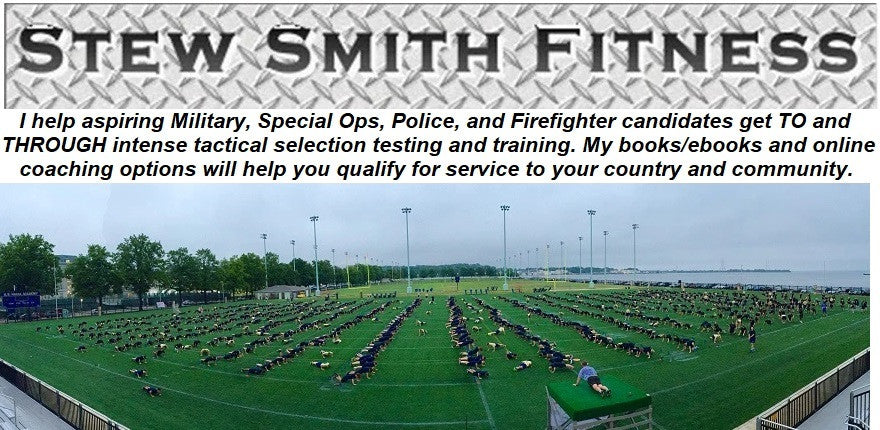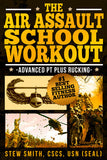The Balance of Life, Work, Training (Stress) and Recovery / Stress Mitigation

Think of the stresses that life brings upon us and the recovery from that stress as a see-saw. Too much stress whether from your daily experiences (real or imagined), work, personal, or life in general will weigh on one end of the see-saw and everything you do to help you balance and recover on the other end. The pie chart below explains the importance of sleep, nutrition, and other recovery methods in order of importance.

As we age, the recovery response will take longer and will require more focus on sleep and nutrition more than anything. Maybe you are not over-stressed but just a little burned out. Your training day may only require a few days where your more challenging workout schedules be pulled back. These days can be mobility days or you can create a 50/50 split of the normally designed workout by setting a timer for 5 minutes of regular activity with 5 minutes of stretching, foam rolling, massage tools, or just walking. This will cut a hard workout in half and allow for some moderately easier programming when the stressful day or poor night's sleep make it more important. This requires you to listen to your body, not necessarily your head as your thinking may be guiding you to push harder when all you really needed was a mobility day or slight pullback.
Think of It This Way
When you are stressed out you may not even realize it if you are not taking moments to do an internal awareness check. When we say actively pursue recovery, we mean you have to be in tune with your mind and body. Here are some of the many issues you may see when stressed out / over-training / over-working...just about OVER-DOING anything (or under-sleeping / poor eating).
Washed-out feeling, tired, drained, lack of energy
Pain in muscles and joints
Sudden drop in performance
Insomnia
Headaches / High blood pressure
Increased number of colds, and sore throats
Decrease in training capacity / intensity
Moodiness and irritability
Decreased sexual function
Depression
Increased resting heart rate
Decreased appetite, etc
If you are stressed, your sympathetic nervous system is working - over working to keep you alive. That is what it does when it responds to a threat in the fight or flight response. The same stress hormones rush through your body if in a life or death situation or while driving (road rage) or when you cannot pay a bill at the end of the month. You have to use the other part of the central nervous system that is in charge of "rest and digest". The slow down system. The Parasympathetic Nervous System.
Your ability to engage the parasympathetic nervous system will help you with all of the above if stress related. When you feel that stressful moment (either real or imagined) take a minute to breathe deeply. You should get 4–5 breath cycles in that minute by inhaling in through the nose (fully), hold for 2–3 seconds, then exhale slowly through the mouth for about 10–15 seconds. This will take care of any jitters, butterflies, anxiety you maybe feeling at the time. Do for a few minutes while you start to go to sleep for better results with sleeping — our true stress buster.
The choice of doing a high intensity workout that stresses your body is actually the last thing you want to do when in this state of high stress. Focus on easy workouts that help you with deep breathing. Cardio and even non-impact cardio are great options on days like this.
See more articles and tactical fitness report podcasts that reflect the benefit of ACTIVELY PURSUING RECOVERY.
Recovery from Intensive Training
TFR - What Happens During Recovery with Jeff Nichols
TFR Recovery for First Responders with Jeff Nichols
TFR Recovery at BUDS (SEAL Training) with Jeff Nichols
TFR Recovery Products to Consider for that Missing 10-15%
TFR - Avoid Stress / Over-training with Jeff Nichols
But First…
What is Tactical Fitness? Primarily the fitness required to get into and remain in the military, police, fire fighter, EMT services. The goal of tactical fitness is to create a strong and capable body to save yourself and others in an emergency situation. But we all should be strong and capable enough to save ourselves and others in such situations (accidents, fire, storms, etc). Be an asset in an emergency situation. Do you need to be saved? Or can you take care of yourself and your loved ones?
Think about it...Your Fitness is THAT Important Still...
The following rules are part of the programming used in the 52 week – four part training series: Tactical Fitness 40+. From Rebuilding the Foundation to getting Ready to Compete, and being an above average fitness level after 40, this series uses the following rules religiously. But you do not have to be 40 and over the benefit from these rules - especially when you are burning the candle at both ends.
You can still do advanced level workouts with these rules, just make sure you actively pursue recovery methods like eating well, sleeping, hydrating, breathing deeply, taking rest days, as well as the following NEW RULES:
NEW RULES for Fitness
-
You can no longer out work your diet – Focus on smaller portions, avoid junk food, sugar, even decreasing / eliminating sugar, do not avoid fruits /vegetables as these are good carbs that are high in nutrients you need for energy and recovery, and drink more water. This one takes discipline as the old habits of eating like we were highly active 20-year olds is a tough one to break, even if you are still highly active after 40 years old.
-
Run every OTHER day - add non impact cardio – Unless you are still competing in races or under 200 lbs. of body weight, consider running every OTHER day instead of daily or 5-6 times a week. Replace some of the running days with non-impact cardio options (bike, row, elliptical, swim) on the days in between running days. You can still train hard 5-6 days a week, just give your body a break from the impact by doing challenging non-impact options. You can build up distance or speed as you prefer on your running days to help you maintain abilities in many tactical professions, keep weight down, especially if still taking military fitness tests.
When running fast (sprinting) it is good to remember - 80% is the new 100%. Pulled hamstrings, blown achilles tendons, torn hip flexors have a higher percentage of occurring if you go all out. Proper warmup is always required when pushing your speed limits and sometimes that takes longer than we are willing to give.
See related article on Hating Running for 35 Years - Lessons Learned
-
Lift But Differently - If you are an easy gainer and can quickly get strong and bulky with a lift cycle, you can still lift, but make sure you follow lift cycles with a good amount of cardio (run, bike, elliptical, swim). If you can keep off the extra weight that comes with increased strength during lift cycles, your next cycle of cardio / calisthenics (periodization) will be much easier. Face it - losing weight is tough. Running heavy is even tougher.
- GAME CHANGER - Add a mobility day each week – This one is actually life changing for me personally and allows me to be pain free even after 50 years old while still training with a group of 20 year old tactical athlete students (spec ops level). You can either replace a typical challenging workout with this mobility or add it to a day off each week. It is simple but effective. See routine options below:
-
Repeat 5 times
Bike, elliptical, row, or swim 5 minutes
Foam roll, stretch, car buffer massage 5 minutes
Regardless of your goals, the mobility day added to mid to late week will enhance the later workouts of the week or weekend and help you walk out of the gym feeling no pain! If you feel you need it, do the mobility day two times in a week.
-
Learn how to foam roll, stretch daily, car buffer – That is right! A car buffer (small hand car buffer made by Ryobi for $30 at Home Depot) is what I use to get a deep vibration that is soothing to the muscles. This must be an orbital / vibrating car buffer not a rotary (spinning) car buffer. Apply to joints, muscles, lower back for near immediate soothing effects. But stretching and a foam roller should be the mandatory parts of this rule – DAILY.

- New tools for becoming more mobile and in less pain:

- In conclusion, LOSE WEIGHT my final piece of advice is to get lighter – try not to gain too much weight, even during heavy lifting cycles. It is easy to gain a pound or two a year and in 5-10 years “suddenly” be 10-20 pounds overweight. Being lighter is just easier to move, less pressure on your joints, and typically means you have a healthy fat to body mass ratio. I have found that the heavier I am the worse my blood screening numbers are and it hurts more to run.
Part 1 - Foundation Building (12 weeks) (book / ebook)
Part 2 - Taking it to the Next Level (12 weeks) (book / ebook)
Part 3 - Ready to Compete (12 weeks) (book / ebook)
Part 4 – Tactical Fitness For the Athlete Over 40 (16 weeks) (book / ebook)
Check out the Stew Smith Fitness Store for more information on what we have available.
Special Ops Programming
Military Programming







and many more...
Police and Fire Fighter Programming
General Fitness Programming







and many more...
Home Gym Programming
Personalized Training Programs - Personalized online coaching available too - any fitness level. In fact, most people on the PT CLUB program are over 40 with specific health and fitness goals.
Try Our Stew Smith Fitness Members Only Club - #1 Best Selling Tactical Fitness Programs
 Questions? Just email me at Stew@StewSmith.com
Questions? Just email me at Stew@StewSmith.com
At StewSmith.com - List of Products and Services
- FREE Articles
- Podcasts and Swimming Videos at Youtube.com page
- eBooks
- Books and eBooks in PRINT
- Stew Smith Fitness Club membership site
- Online Coaching















